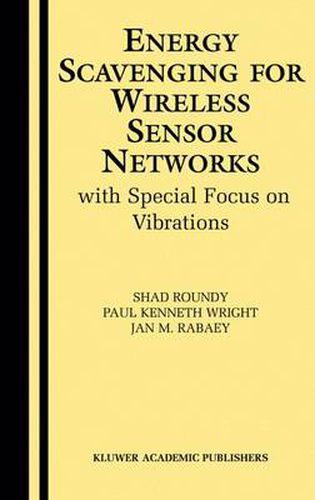Readings Newsletter
Become a Readings Member to make your shopping experience even easier.
Sign in or sign up for free!
You’re not far away from qualifying for FREE standard shipping within Australia
You’ve qualified for FREE standard shipping within Australia
The cart is loading…






This title is printed to order. This book may have been self-published. If so, we cannot guarantee the quality of the content. In the main most books will have gone through the editing process however some may not. We therefore suggest that you be aware of this before ordering this book. If in doubt check either the author or publisher’s details as we are unable to accept any returns unless they are faulty. Please contact us if you have any questions.
The vast reduction in size and power consumption of CMOS circuitry has led to a large research effort based around the vision of ubiquitous networks of wireless communication nodes. The wireless devices are usually designed to run on batteries. However, as the networks increase in number and the devices decrease in size, the replacement of depleted batteries is not practical. Furthermore, a battery that is large enough to last the lifetime of the device would dominate the overall system size, and thus is not very attractive. There is clearly a need to explore alternative methods of powering these small communication nodes. This book, therefore, focuses on potential ambient sources of power that can be scavenged or harvested and subsequently used to run low power electronics and wireless transceivers. A wide range of potential power sources are briefly explored. Based on a comparison of these many potential sources, commonly occurring vibrations was chosen as an attractive, and little explored, power source. Models for different types of power converters using both electrostatic and piezoelectric conversion mechanisms have been developed. The models have been validated by testing prototypes driven at vibrations similar to those found in many industrial and commercial building environments. Finally, integration of a piezoelectric generator, power circuit, and custom design radio transceiver is demonstrated. Power sources are becoming a bottleneck to the widespread deployment of wireless sensor networks. This work reviews many potential alternative sources of ambient power that can be scavenged. Vibration to electricity converters are explored in great detail, and based on studies and experiments, are shown to be an attractive power source in many applications.
$9.00 standard shipping within Australia
FREE standard shipping within Australia for orders over $100.00
Express & International shipping calculated at checkout
This title is printed to order. This book may have been self-published. If so, we cannot guarantee the quality of the content. In the main most books will have gone through the editing process however some may not. We therefore suggest that you be aware of this before ordering this book. If in doubt check either the author or publisher’s details as we are unable to accept any returns unless they are faulty. Please contact us if you have any questions.
The vast reduction in size and power consumption of CMOS circuitry has led to a large research effort based around the vision of ubiquitous networks of wireless communication nodes. The wireless devices are usually designed to run on batteries. However, as the networks increase in number and the devices decrease in size, the replacement of depleted batteries is not practical. Furthermore, a battery that is large enough to last the lifetime of the device would dominate the overall system size, and thus is not very attractive. There is clearly a need to explore alternative methods of powering these small communication nodes. This book, therefore, focuses on potential ambient sources of power that can be scavenged or harvested and subsequently used to run low power electronics and wireless transceivers. A wide range of potential power sources are briefly explored. Based on a comparison of these many potential sources, commonly occurring vibrations was chosen as an attractive, and little explored, power source. Models for different types of power converters using both electrostatic and piezoelectric conversion mechanisms have been developed. The models have been validated by testing prototypes driven at vibrations similar to those found in many industrial and commercial building environments. Finally, integration of a piezoelectric generator, power circuit, and custom design radio transceiver is demonstrated. Power sources are becoming a bottleneck to the widespread deployment of wireless sensor networks. This work reviews many potential alternative sources of ambient power that can be scavenged. Vibration to electricity converters are explored in great detail, and based on studies and experiments, are shown to be an attractive power source in many applications.